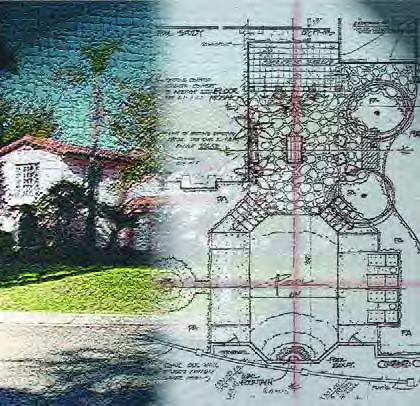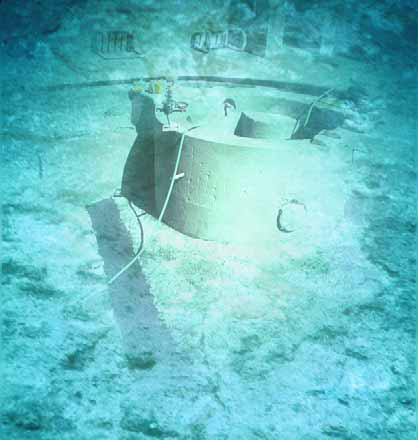ARTICLES
Advance Search
Aquatic Health
Aquatic Health, Fitness & Safety
Around the Internet
Aquatic Culture
Aquatic Technology
Artful Endeavors
Celebrity Corner
Life Aquatic
Must-See Watershapes
People with Cameras
Watershapes in the Headlines
Art/Architectural History
Book & Media Reviews
Commentaries, Interviews & Profiles
Concrete Science
Environment
Fountains
Geotechnical
Join the Dialogue
Landscape, Plants, Hardscape & Decks
Lighter Side
Ripples
Test Your Knowledge
The Aquatic Quiz
Other Waterfeatures (from birdbaths to lakes)
Outdoor Living, Fire Features, Amenities & Lighting
Plants
Ponds, Streams & Waterfalls
Pools & Spas
Professional Watershaping
Structures (Editor's Notes)
Travelogues & History
Water Chemistry
WaterShapes TV
WaterShapes World Blog
Web Links
Around the Internet
Aquatic Culture
Aquatic Technology
Artful Endeavors
Celebrity Corner
Life Aquatic
Must-See Watershapes
People with Cameras
Watershapes in the Headlines
I was hired recently to work on a substantial restoration project in a prominent Los Angeles neighborhood. I'd worked previously with the architect on a large estate, and he had referred me to the homeowners. After a couple of meetings, we determined we were all a good fit, and I was hired to design the exterior spaces of the home in collaboration with the architect, the contractor and the decorator. About a month into the project, the interior decorator was let go in favor of a restoration specialist. By that time, it was clear that many of the design decisions being made were not in keeping with
Over and over at seminars and trade shows, watershapers ask me three distinct but interrelated questions: "How do you get into the high-end market?" and "How do you deal with wealthy customers?" and "How do you handle those kinds of jobs?" The short answer to all of them is that I've set myself up for it and am prepared to tackle these projects and clients as they come. To me, it's as natural as breathing. The deeper answer is much more complicated, obviously, and has to do with my understanding that working with upper echelon clients means accommodating an entire range of issues that
One of the themes that weaves its way through a great many of the articles and columns we've run in WaterShapes through the years turns on the thought that watershape design
Built to function and compete in an era when marketing matters for healthcare facilities, the McKay-Dee Hospital Center was designed to create a soothing, supportive, healing environment for patients, visitors and staff - so much so that the center looks more like a resort hotel than a medical institution. The architecture is open and soaring, offering sweeping views from interior spaces set up for comfort and restfulness. Designed by Jeff Stouffler of HKS Architects of Dallas, the structure is organized around a four-story atrium that runs the length of the building, offering clear lines of sight not only to distant mountain and valley views, but also to nearby landscapes graced with winding paths and beautiful watershapes. The opening of the 690,000-square-foot facility on March 25, 2002, was accompanied by great public fanfare. As people in the community have embraced and begun to seek care there, it's been a point of pride for us at Bratt Water Features to know that the beautiful curving lake that wraps around the exterior of the gleaming building is one of the things people see, enjoy and appreciate the most. BROAD SCOPE Our job was to build all of watershapes, including seven small fountains and the big lake system, based on designs prepared by Waterscape Consultants of Houston and by landscape architect James Burnett, also of Houston. As bidders on the installation contract in 1999, we had the advantage of being a local firm - but we also brought extensive experience with large-scale public waterfeatures to the table. And this project was big. As far as anyone on the design team knows, this is the largest waterfeature/fountain complex ever built in the state of Utah. We refer affectionately to the feature as "Bullwinkle" because, when seen from overhead, its oddly symmetrical free-form shape casts a silhouette resembling the cartoon moose's head and antlers. The antlers wrap around the footprint of the west end of the building, with the nose stretching away from hospital to create a broad lake with a towering geyser at the far end. The 175-foot-wide, 500-foot-long watershape features a 170-foot-long waterfall between the antlers and the crown of Bullwinkle's head that faces an outdoor pavilion/eating area served by an indoor café. The water falls four feet into a teardrop-shaped lower pond that serves as a catch basin - and which turned out to be critical to
I've always believed that great projects require three key elements: a beautiful design, knowledgeable and careful construction, and a good client. For the project pictured here, all three of those pieces were in place, and the result has become a significant point of pride for our firm. The site consists of three sloping acres in the upscale community of Mill Neck on the north shore of Long Island, N.Y. The home sits at the highest elevation of the property, which reaches down to a large, brackish pond fed by the waters of nearby Mill Neck Bay. The swimming pool and surrounding hardscape and landscape were
In 1997, the City of Palm Springs Arts Commission held a national competition for a sculpture to be placed in a prominent public space, the Frances Stevens Park. I was intrigued by the site's high visibility - and by the fact that the California city wanted a sculpture that used water in a desert setting. Working from my studio on the East Coast, I put together an initial proposal that included a number of ideas - provocative to me, but not yet fine-tuned. It wasn't until I actually visited the site in Round Two of the selection process that I knew just how perfect a setting was being offered - a wide-open space in the center of town, ringed by tall palm trees and low-lying buildings with the stunning
As a designer, I've always sought out exceptional finish materials to use in my projects. My background is in fine arts, and I've worked in the design/build business for years, creating high-end exterior and interior spaces and taking pride in finding surfacing products that excite my clients and beautify the work. Operating in south Florida, however, I kept running into so many limitations on what was available that it had the effect of limiting my creativity. Natural stone can be hard to come by in adequate supply where I live, for instance, and as much as I like tile, it doesn't fill the bill for every job. Anything's available at a price, of course, but even
Watershaping can be so demanding a profession that it's easy to lose sight of the fact that what we do should really be fun and enjoyable. That's why I bring up two books this month that make a case for approaching your work in ways that encourage a daily sense of joy and adventure for both you and your clients. The first is simply titled Fish! Written by Stephen C. Lundin, Harry Paul and John Christensen (Hyperion, 2000), it's a modern parable about a woman named Mary who has taken over as manager of her company's toxic-waste management division. It's a job with horrid potential, but as the story goes, Mary is helped by a visit to the famous (and very real) Pike Place Market in Seattle, where she's captivated not only by the wonderful fish on sale, but also by the joy and pleasure she derives from shopping there. What Mary learns is how to
In renovation projects, preparation of the pool's interior surface for a new finish is truly where the rubber meets the road - a key step in which what you've planned and what you actually do must come together. With this installment of "Details," we're doubling back to the Los Angeles project we left behind in October as we waited for tile to arrive from Italy. If you'll recall, the pool had been built in the 1920s and graces a property with a magnificent Gatsby-era home. As I mentioned at the outset of this interrupted sequence of columns, the homeowners have been extremely involved, always wanting to know as much as they possibly can about what's going on in their backyard. As I mentioned as well, the challenge
I found a new "favorite" plant last summer. It's called Dalechampia dioscorefolia, otherwise known as the Costa Rican Butterfly Vine. Its stunningly beautiful, exotic flowers were unlike those on any of the vines I typically see at nurseries and easily earned a place in my disorganized (and experimental) backyard garden. Given its unique beauty, I placed it on a trellis directly outside my bedroom window so I could see it every day and observe its progress. After a few months of growth, it was still quite floppy and had not wrapped itself around places high enough on the trellis for my liking. So one Saturday, I went out and wrestled apart many of the branches of the vine that had wrapped around themselves and set them up to reach






















